- Home
- Alexandre Dumas
Man in the Iron Mask (Barnes & Noble Classics Series)
Man in the Iron Mask (Barnes & Noble Classics Series) Read online
Table of Contents
From the Pages of The Man in the Iron Mask
Title Page
Copyright Page
Alexandre Dumas
The World of Alexandre Dumas and The Man in the Iron Mask
Introduction
Chapter 1 - Two Old Friends
Chapter 2 - Wherein May Be Seen That a Bargain Which Cannot Be Made With One ...
Chapter 3 - The Skin of the Bear
Chapter 4 - An Interview with the Queen-Mother
Chapter 5 - Two Friends
Chapter 6 - How Jean de la Fontaine Wrote His First Tale
Chapter 7 - La Fontaine In the Character of a Negotiator
Chapter 8 - Madame de Belliere’s Plate and Diamonds
Chapter 9 - M. de Mazarin’s Receipt
Chapter 10 - Monsieur Colbert’s Rough Draft
Chapter 11 - In Which the Author Thinks It Is Now Time to Return to the Vicomte ...
Chapter 12 - Bragelonne Continues His Inquiries
Chapter 13 - Two Jealousies
Chapter 14 - A Domiciliary Visit
Chapter 15 - Porthos’s Plan of Action
Chapter 16 - The Change of Residence, the Trap-Door, and the Portrait
Chapter 17 - Rival Politics
Chapter 18 - Rival Affections
Chapter 19 - King and Nobility
Chapter 20 - After the Storm
Chapter 21 - Heu! Miser!
Chapter 22 - Wounds Upon Wounds
Chapter 23 - What Raoul Had Guessed
Chapter 24 - Three Guests Astonished to Find Themselves at Supper Together
Chapter 25 - What Took Place at the Louvre During the Supper at the Bastille
Chapter 26 - Political Rivals
Chapter 27 - In Which Porthos Is Convinced Without Having Understood Anything
Chapter 28 - M. de Baisemeaux’s “Society”
Chapter 29 - The Prisoner
Chapter 30 - How Mouston Had Become Fatter Without Giving Porthos Notice ...
Chapter 31 - Who Messire Jean Percerin Was
Chapter 32 - The Patterns
Chapter 33 - Where, Probably, Molière Formed His First Idea of the Bourgeois Gentilhomme
Chapter 34 - The Beehive, the Bees, and the Honey
Chapter 35 - Another Supper at the Bastille
Chapter 36 - The General of the Order
Chapter 37 - The Tempter
Chapter 38 - Crown and Tiara
Chapter 39 - The Château de Vaux-le-Vicomte
Chapter 40 - The Wine of Mélun
Chapter 41 - Nectar and Ambrosia
Chapter 42 - A Gascon, and a Gascon and a Half
Chapter 43 - Colbert
Chapter 44 - Jealousy
Chapter 45 - High Treason
Chapter 46 - A Night at the Bastille
Chapter 47 - The Shadow of M. Fouquet
Chapter 48 - The Morning
Chapter 49 - The King’s Friend
Chapter 50 - Showing How the Countersign Was Respected at the Bastille
Chapter 51 - The King’s Gratitude
Chapter 52 - The False King
Chapter 53 - In Which Porthos Thinks He Is Pursuing a Duchy
Chapter 54 - The Last Adieux
Chapter 55 - Monsieur de Beaufort
Chapter 56 - Preparations for Departure
Chapter 57 - Planchet’s Inventory
Chapter 58 - The Inventory of M. de Beaufort
Chapter 59 - The Silver Dish
Chapter 60 - Captive and Jailers
Chapter 61 - Promises
Chapter 62 - Among Women
Chapter 63 - The Last Supper
Chapter 64 - In the Carriage of M. Colbert
Chapter 65 - The Two Lighters
Chapter 66 - Friendly Advice
Chapter 67 - How the King, Louis XIV, Played His Little Part
Chapter 68 - The White Horse and the Black Horse
Chapter 69 - In Which the Squirrel Falls—In Which the Adder Flies
Chapter 70 - Belle-Isle-En-Mer
Chapter 71 - The Explanations of Aramis
Chapter 72 - Result of the Ideas of the King, and the Ideas of d’Artagnan
Chapter 73 - The Ancestors of Porthos
Chapter 74 - The Son of Biscarrat
Chapter 75 - The Grotto of Locmaria
Chapter 76 - The Grotto
Chapter 77 - An Homeric Song
Chapter 78 - The Death of a Titan
Chapter 79 - The Epitaph of Porthos
Chapter 80 - The Round of M. de Gesvres
Chapter 81 - King Louis XIV
Chapter 82 - The Friends of M. Fouquet
Chapter 83 - Porthos’s Will
Chapter 84 - The Old Age of Athos
Chapter 85 - The Vision of Athos
Chapter 86 - The Angel of Death
Chapter 87 - The Bulletin
Chapter 88 - The Last Canto of the Poem
Epilogue
Endnotes
Inspired by The Man in the Iron Mask
Comments & Questions
For Further Reading
From the Pages of
The Man in the Iron Mask
“Being obliged to conceal myself, I was fortunate enough to meet with M. d’Artagnan, who was formerly one of your friends, I believe ?”
(page 10)
The old coquette understood the trick that had been played her. She was standing immediately before a large mirror, in which her decrepitude, so carefully concealed, was only made more manifest. And, thereupon, without even saluting Aramis, who bowed with the ease and grace of the musketeer of early days, she hurried away with trembling steps, which her very precipitation only the more impeded. Aramis sprang across the room, like a zephyr, to lead her to the door. Madame de Chevreuse made a sign to her servant, who resumed his musket; and she left the house where such tender friends had not been able to understand each other, only because they had understood each other too well.
(page 22)
“I was wounded, attacked by fever; my senses were gone, and I have only a very faint recollection of it all. But there is no reason why we should search very far, when the very man we want is close at hand. Is not d’Artagnan your friend?”
(page 96)
“I, monseigneur, wish you to be a king for the good of humanity.”
(page 235)
“I shall have made one man happy; and Heaven for that will hold me in better account than if I had made one man powerful; for that is far more difficult.”
(page 303)
“A friend’s word is the truth itself.”
(page 333)
“I would sooner, far sooner, have swallowed at one draught all the poisons that Mithridates drank in twenty years, in order to try to avoid death, than have betrayed my secret to the King.”
(page 402)
D’Artagnan seized a pistol and cocked it, hoping that the noise of the spring would stop his enemy.
(page 554)
Contrary to what always happens, whether in politics or morals, each kept his promise, and did honour to his engagements.
(page 706)
Published by Barnes & Noble Books
122 Fifth Avenue
New York, NY 10011
www.barnesandnoble.com/classics
The Vicomte de Bragelonne was first published in 1847. The present text of The Man in the
Iron Mask comprises the latter third of Dumas’s titanic narrative and follows
the standard translation, which remains anonymous.
Published in 2005 by Barnes & Noble Classics with new Introduction, Notes, Bi
ography,
Chronology, Inspired By, Comments & Questions,
and For Further Reading.
Introduction, Notes, and For Further Reading
Copyright © 2005 by Barbara T. Cooper.
Note on Alexandre Dumas, The World of Alexandre Dumas and The Man in the Iron
Mask, Inspired by The Man in the Iron Mask, and Comments & Questions
Copyright © 2005 by Barnes & Noble, Inc.
All rights reserved. No part of this publication may be reproduced or transmitted
in any form or by any means, electronic or mechanical, including photocopy,
recording, or any information storage and retrieval system, without the prior
written permission of the publisher. Barnes & Noble Classics and the Barnes
& Noble Classics colophon are trademarks of Barnes & Noble, Inc.
The Man in the Iron Mask
ISBN-13: 978-1-59308-233-9
ISBN-10: 1-59308-233-9
eISBN : 978-1-411-43264-2
LC Control Number 2005926186
Produced and published in conjunction with:
Fine Creative Media, Inc.
322 Eighth Avenue
New York, NY 10001
Michael J. Fine, President and Publisher
Printed in the United States of America
QM
3 5 7 9 10 8 6 4 2
Alexandre Dumas
Alexandre Dumas was born on July 24, 1802, in Villers-Cotterets, a town northeast of Paris. He was the grandson of a French nobleman, the Marquis Davy de la Pailleterie, and Marie-Cessette Dumas, an Afro-Caribbean slave. His father, Thomas-Alexandre Davy de la Pailleterie, took the name Dumas when he enlisted in the French army. After a period of illustrious service, he rose to the rank of general; but by the end of the eighteenth century, he had fallen into disfavor with Napoleon and was subsequently imprisoned. Thomas-Alexandre Dumas died penniless and broken at age forty-five, leaving his family impoverished. Young Alexandre received only a limited education; however, he was an avid reader, and his elegant penmanship got him a position as clerk to a solicitor. In 1823, he moved to Paris, where, through his father’s connections, he became a copyist for the Duke of Orléans, the future King Louis-Philippe.
Dumas soon turned his attention to literary pursuits. His first major success was the historical drama Henry III and His Court in 1829, followed in 1831 by Antony. By his thirtieth birthday, Dumas was regarded as one of the major figures of the nascent French Romantic theater. His The Tower of Nesle ( 1832) is a classic example of French romantic drama replete with love, treachery, and death. Despite his success as a playwright, Dumas found his true métier with the birth of the roman feuilleton, or serial novel, in the 1840s. His gripping adventures, with their rambling subplots and moments of suspense, were ideally suited to serialization in newspapers. The Three Musketeers, serialized beginning in 1843 and first published in novel form in 1844, was an overwhelming success that instantly established Dumas as a master of the genre. The Count of Monte Cristo, also published in 1844, was equally popular. In 1845, the first sequel to The Three Musketeers, Twenty Years After, was published, followed by the final book in the trilogy, The Viscount of Bragelonne; or, Ten Years Later, whose three parts were published between 1848 and 1850. Because of its length, the trilogy’s final book is often published in three segments: The Vicomte de Bragelonne, Louise de la Vallière, and The Man in the Iron Mask.
Enormously prolific, Dumas was known for collaborating with others, notably Auguste Maquet, with whom he wrote The Three Musketeers and The Count of Monte Cristo. His practice of using other literary works as sources and working with collaborators, while hardly unique among his contemporaries, was often criticized, making him a controversial figure in French literary circles. Dumas’s life was filled with adventures. He participated in the July Revolution of 1830 in France as well as in Garibaldi’s quest for Italian independence in the 1860s; he amassed a fortune through his writing, only to let his lavish lifestyle plunge him into perpetual debt; and he built (and then lost in bankruptcy) an opulent château on the outskirts of Paris that he called Monte Cristo. He was also an incorrigible lover whose numerous liaisons produced three children, including a son, Alexandre Dumas (known as Dumas fils to distinguish him from his father), who became an important author in his own right. Alexandre Dumas père died on December 5, 1870.
The World of Alexandre Dumas and The Man in the Iron Mask
1622 King Louis XIII of France forms the Musketeers. His personal bodyguards, they number approximately 200 and are armed with the newly developed flintlock, muzzle-loading rifle, or musket.
1642 M. de Tréville, the Musketeers’s capitaine lieutenant, is involved in an attempt to assassinate the King’s adviser Cardinal Richelieu. The plot fails, and de Tréville is dismissed from the court and the Musketeers.
1667 Born in 1623, Charles de Baatz d‘Artagnan, the real-life d’Artagnan, becomes the capitaine lieutenant of one of the two companies of King Louis XIV’s Musketeers. He is later appointed governor of Lille.
1673 The real-life d’Artagnan dies in the battle of Maestricht, Holland.
1789- 1815 The years surrounding the French Revolution and the rise and fall of Napoleon Bonaparte produce upheavals in French society. In literature, classicism, featuring universal themes and pure genres such as tragedy and comedy (the former represented by Corneille and Racine, and the latter by Molière), remains the dominant force. However, a new modernism, fueled by the works of Shakespeare, the German Sturm und Drang movement, and such Romantics as Lord Byron and Sir Walter Scott, arises as a competing trend in which genres are often mixed.
1802 Alexandre Dumas is born on July 24 in Villers-Cotterêts, a village in the department of Aisne to the northeast of Paris. Dumas’s mother is Marie-Louise-Elisabeth Labouret, the daughter of a local innkeeper; his father, Thomas-Alexandre Dumas, is the Haitian-born son of the Marquis Antoine-Alexandre Davy de la Pailleterie, a French nobleman, and Marie-Cessette Dumas, an Afro-Caribbean slave from the French colony of Santo Domingo.
1806 Thomas-Alexandre Dumas, a leading general in Napoléon’s army who has fallen into disfavor, dies, leaving his family impoverished. Young Dumas receives a limited education and becomes attracted to the popular literature of the time.
1817- 1820 Dumas takes a job as a solicitor’s clerk in Villers-Cotterêts. At eighteen he meets Adolphe de Leuvan, a young exiled Swedish aristocrat through whom Dumas is introduced to the Parisian theater scene.
1822- 1823 Dumas relocates to Paris. With help from his father’s military colleagues and because of his elegant handwriting, he becomes a copyist for the Duke of Orléans, the future King Louis-Philippe of France, whose palace houses the royal Théâtre-Français. Attending a show one evening, Dumas meets writer Charles Nodier, who will later help advance the young playwright’s career. Dumas reads the work of Shakespeare, Scott, Byron, Schiller, and others influential in the development of the French Romantic movement. He meets Giuseppe Garibaldi, an Italian patriot and soldier who will influence Dumas later in his life.
1824 On July 27, Catherine Labay, a seamstress and neighbor Dumas had begun courting the previous year, bears him a son, Alexandre. (When the son later becomes a respected writer himself, he is known as Alexandre Dumas fils to distinguish him from his father, called Alexandre Dumas père.)
1825-1829 Dumas begins to write plays, often in collaboration with others such as Adolphe Ribbing de Leuven. In 1829 he achieves a resounding success when Henri III et sa cour (Henry III and His Court) is presented at the Comédie-Française. The author becomes an instant celebrity in Paris and wins admiration from the young Romantics.
1830-1836 During the Revolution of 1830, Dumas supports the liberal campaign of the Marquis de Lafayette. The same year, a riot pits young Romantics against classicists at the opening of Victor Hugo’s play Hernani, signaling the ascendancy of Romanticism in France. Dumas builds on his success as a playwright; his notable achievements include
Antony (1831), La Tour de Nesle (The Tower of Nesle, 1832), and Kean (1836). The Tower of Nesle, in particular, is still considered a masterpiece of French melodrama.
1837 Amid growing fame and popular success, Dumas is honored with the title of chevalier by the king.
1840-1846 Dumas turns his attention to the novel. Newspaper serialization takes hold as a trend in France, and Dumas quickly proves himself a master of the genre. Les Trois Mousquetaires (The Three Musketeers) becomes a popular sensation when installments begin to appear in 1843. Within a decade two sequels follow: Vingt Ans après (Twenty Years After) and Le Vicomte de Bragelonne ; ou, Dix Ans plus tard (The Viscount of Bragelonne; or, Ten Years Later), a three-part novel the last section of which is The Man in the Iron Mask. The success of Le Comte de Monte-Cristo (The Count of Monte Cristo), which begins serialization in the Journal des Débats in 1844 and is published in book form in 1846, eclipses even that of The Three Musketeers. Despite his success, Dumas is criticized for his vast production of material and is accused of overusing collaborators.
1847-1850 Dumas reaches his peak of success. He opens the Theatre Historique in 1847, mainly to present his own plays, including an 1848 production of The Count of Monte Cristo. He spends vast sums to build a grand, hybrid Renaissance-Gothic-style country house, named Monte Cristo, near Saint-Germain; some 600 people are invited to a lavish house-warming party in July 1848. With the Revolution of 1848, however, theater attendance plummets. In 1850 the Theatre Historique closes its doors, causing financial disaster for Dumas. His house, Monte Cristo, is sold at auction.
1851- 1852 After fleeing to Brussels to escape his creditors, Dumas is forced into bankruptcy. He never regains the prosperity of the preceding decade.
1853- 1870 Dumas travels extensively and produces travel books. From 1853 to 1857 he publishes a newspaper, Le Mousquetaire, and from 1857 to 1862 he produces a literary journal, Le Monte Cristo. He returns to Paris in 1854. While in Italy in the early 1860s he is an active participant in Garibaldi’s struggle for Italian independence; he lives in Naples from 1861 to 1864.

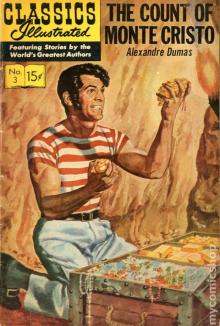 The Count of Monte Cristo, Illustrated
The Count of Monte Cristo, Illustrated Knight of Maison-Rouge
Knight of Maison-Rouge![The Three Musketeers - Alexandre Dumas - [Full Version] - (ANNOTATED) Read online](http://i1.bookreadfree.com/14/the_three_musketeers_-_alexandre_dumas_-_[full_version]_-_annotated_preview.jpg) The Three Musketeers - Alexandre Dumas - [Full Version] - (ANNOTATED)
The Three Musketeers - Alexandre Dumas - [Full Version] - (ANNOTATED)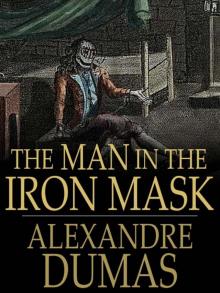 The Man in the Iron Mask
The Man in the Iron Mask The Count of Monte Cristo (Penguin Classics eBook)
The Count of Monte Cristo (Penguin Classics eBook)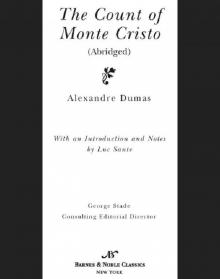 Count of Monte Cristo (abridged) (Barnes & Noble Classics Series)
Count of Monte Cristo (abridged) (Barnes & Noble Classics Series) The Women's War
The Women's War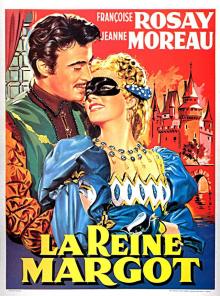 La reine Margot. English
La reine Margot. English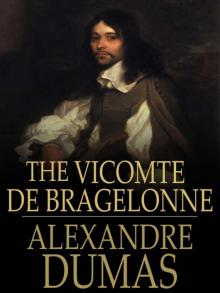 The Vicomte de Bragelonne
The Vicomte de Bragelonne__english_preview.jpg) La dame aux camélias (Novel). English
La dame aux camélias (Novel). English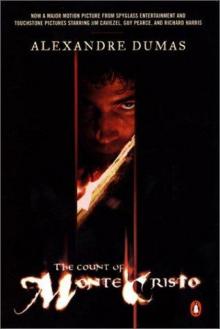 The Count of Monte Cristo
The Count of Monte Cristo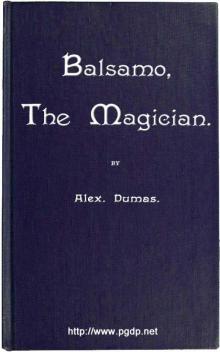 Balsamo, the Magician; or, The Memoirs of a Physician
Balsamo, the Magician; or, The Memoirs of a Physician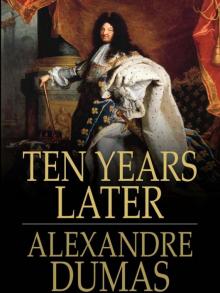 Ten Years Later
Ten Years Later The Romance of Violette
The Romance of Violette The Mesmerist's Victim
The Mesmerist's Victim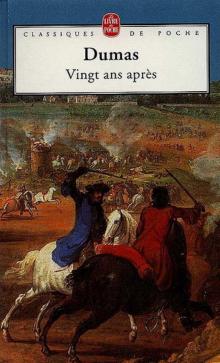 Vingt ans après. English
Vingt ans après. English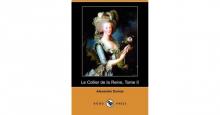 Le collier de la reine. English
Le collier de la reine. English Taking the Bastile; Or, Pitou the Peasant
Taking the Bastile; Or, Pitou the Peasant The Hero of the People: A Historical Romance of Love, Liberty and Loyalty
The Hero of the People: A Historical Romance of Love, Liberty and Loyalty Louise de la Valliere
Louise de la Valliere Les Quarante-cinq. English
Les Quarante-cinq. English Ange Pitou (Volume 1)
Ange Pitou (Volume 1) The Royal Life Guard; or, the flight of the royal family.
The Royal Life Guard; or, the flight of the royal family.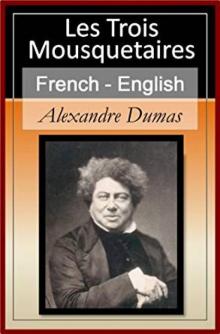 Les trois mousquetaires. English
Les trois mousquetaires. English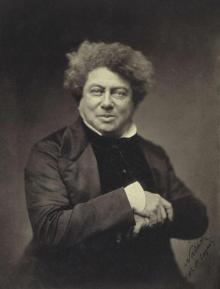 Une fille du régent. English
Une fille du régent. English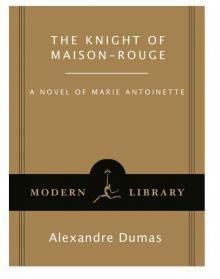 The Knight of Maison-Rouge
The Knight of Maison-Rouge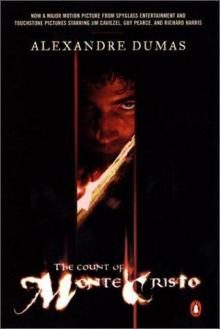 The Count of Monte Cristo (Unabridged Penguin)
The Count of Monte Cristo (Unabridged Penguin) Ange Pitou
Ange Pitou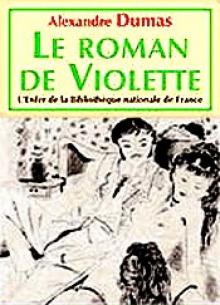 The Romance of Violette (vintage erotica)
The Romance of Violette (vintage erotica)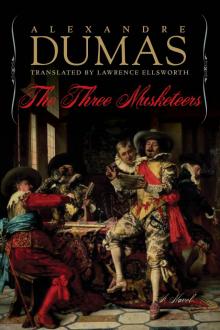 The Three Musketeers
The Three Musketeers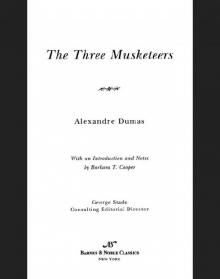 Three Musketeers (Barnes & Noble Classics Series)
Three Musketeers (Barnes & Noble Classics Series) Georges
Georges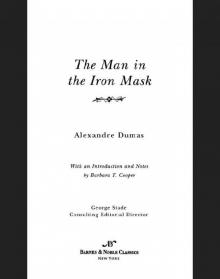 Man in the Iron Mask (Barnes & Noble Classics Series)
Man in the Iron Mask (Barnes & Noble Classics Series)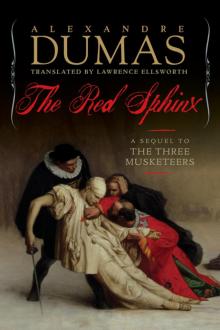 The Red Sphinx
The Red Sphinx